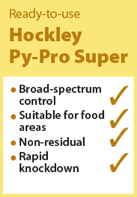Earwig
(Forficula auricularia)
Common throughout all of Europe, the earwig primarily habituates in outdoor locations. As nocturnal pests, they will often be found in darkened cracks and crevices during daylight hours. Although they largely feed on a diet of plants and other vegetation, they also feed on carrion and various insects. During the colder autumn months, they can be sometimes found in warmer indoor areas and therefore can present a significant nuisance factor.
Life cycle:
Egg, nymph, adults
| Egg |
The female earwig lays batches of up to 30 eggs just beneath the soil surface. These eggs are tended to by the female until they are ready to be hatched. |
| Nymph | After hatching, the nymphs go through 4-5 moults until they reach adulthood. The nymphs congregate until the first moult, after which they disperse and live separately. |
| Adult | Ranging from a light to dark brown, the adults can measure up to 20mm in length. They have a glossy appearance, with distinctive pincers. Despite possessing large wings, the earwig seldom flies |
Habitat
The earwig is often found in outdoor locations, such as gardens, yards, flowerbeds and rocks. Favouring dark and damp conditions, these pests are most likely found within cracks and crevices. During cooler months, the earwig may attempt to enter indoor locations.
Recommended Products
Click icons for more information
References
BPCA (2015) The British Pest Manual: A reference manual for the management of environmental health pests and pests of the food industry, 2015 edn., Derby: BPCA.
RSPB (2017) Earwig [Online] Available at: https://www.rspb.org.uk/birds-and-wildlife/bird-and-wildlife-guides/a-z-of-a-wildlife-garden/atoz/e/earwig.aspx (Accessed: 20/2/2017).





